Economic Assignment: Analyzing Self-Interest in Economic Outcomes
VerifiedAdded on 2021/04/24
|6
|701
|343
Homework Assignment
AI Summary
This economics assignment explores the impact of self-interest on economic outcomes, examining scenarios where it benefits and harms society. The paper begins by introducing incentives and Adam Smith's perspective on self-interest. It then analyzes how self-interest maximizes social welfare in the context of private goods, using supply and demand curves to illustrate efficient allocation. The assignment then shifts to situations where self-interest fails, such as when externalities are present, leading to market inefficiencies and overproduction. The assignment uses graphical representations to explain these concepts and concludes by summarizing the contrasting effects of self-interest based on the presence of externalities. The paper draws on established economic literature to support its arguments.
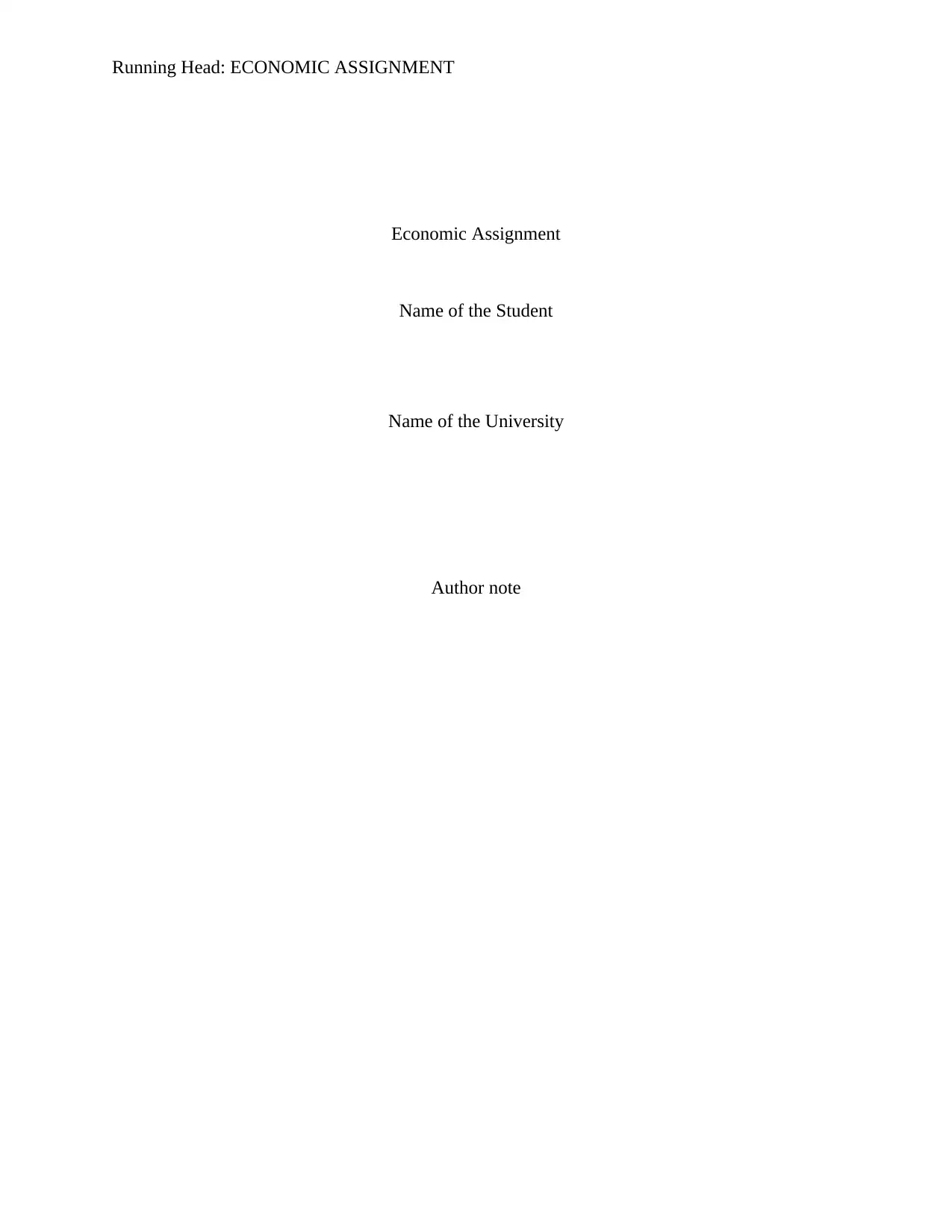
Running Head: ECONOMIC ASSIGNMENT
Economic Assignment
Name of the Student
Name of the University
Author note
Economic Assignment
Name of the Student
Name of the University
Author note
Paraphrase This Document
Need a fresh take? Get an instant paraphrase of this document with our AI Paraphraser
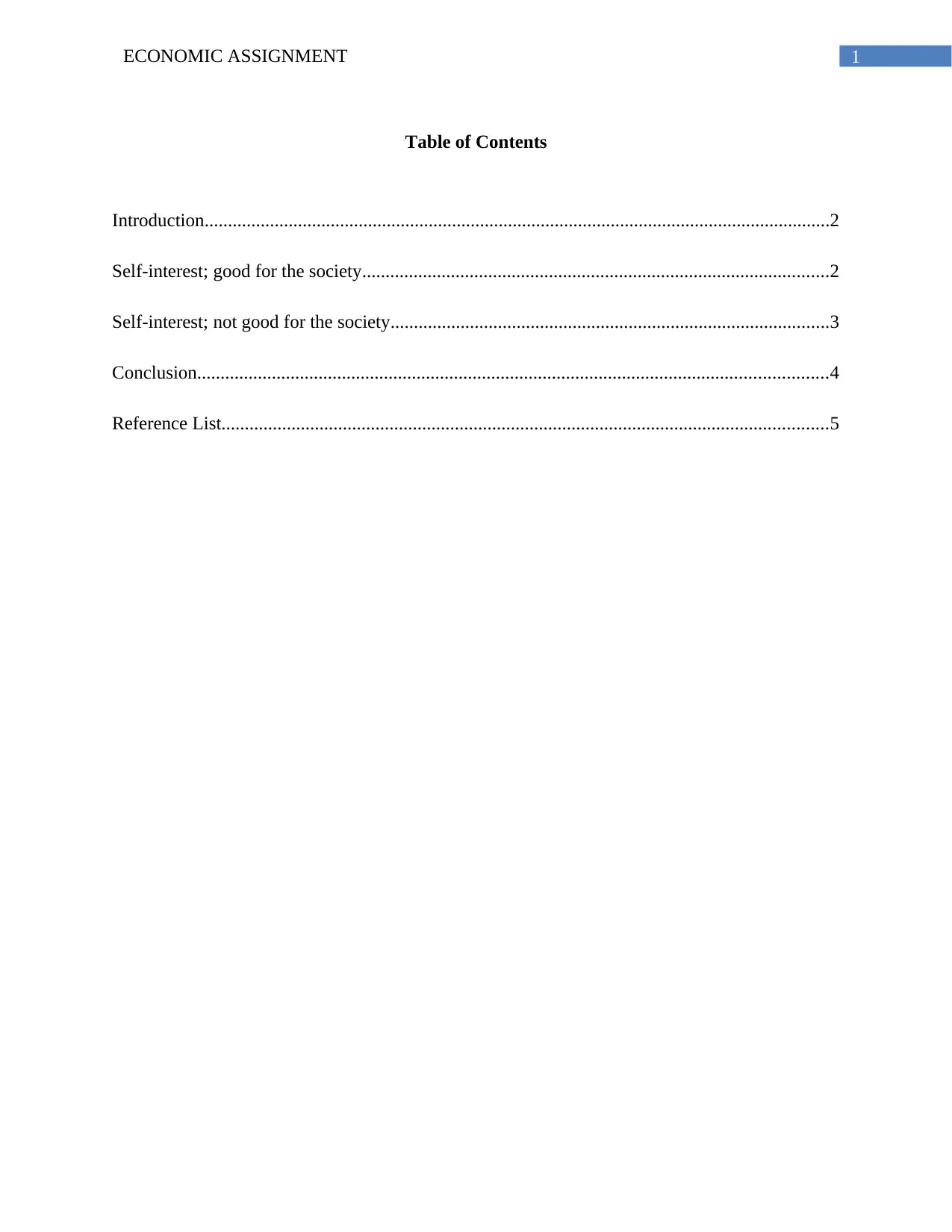
1ECONOMIC ASSIGNMENT
Table of Contents
Introduction......................................................................................................................................2
Self-interest; good for the society....................................................................................................2
Self-interest; not good for the society..............................................................................................3
Conclusion.......................................................................................................................................4
Reference List..................................................................................................................................5
Table of Contents
Introduction......................................................................................................................................2
Self-interest; good for the society....................................................................................................2
Self-interest; not good for the society..............................................................................................3
Conclusion.......................................................................................................................................4
Reference List..................................................................................................................................5
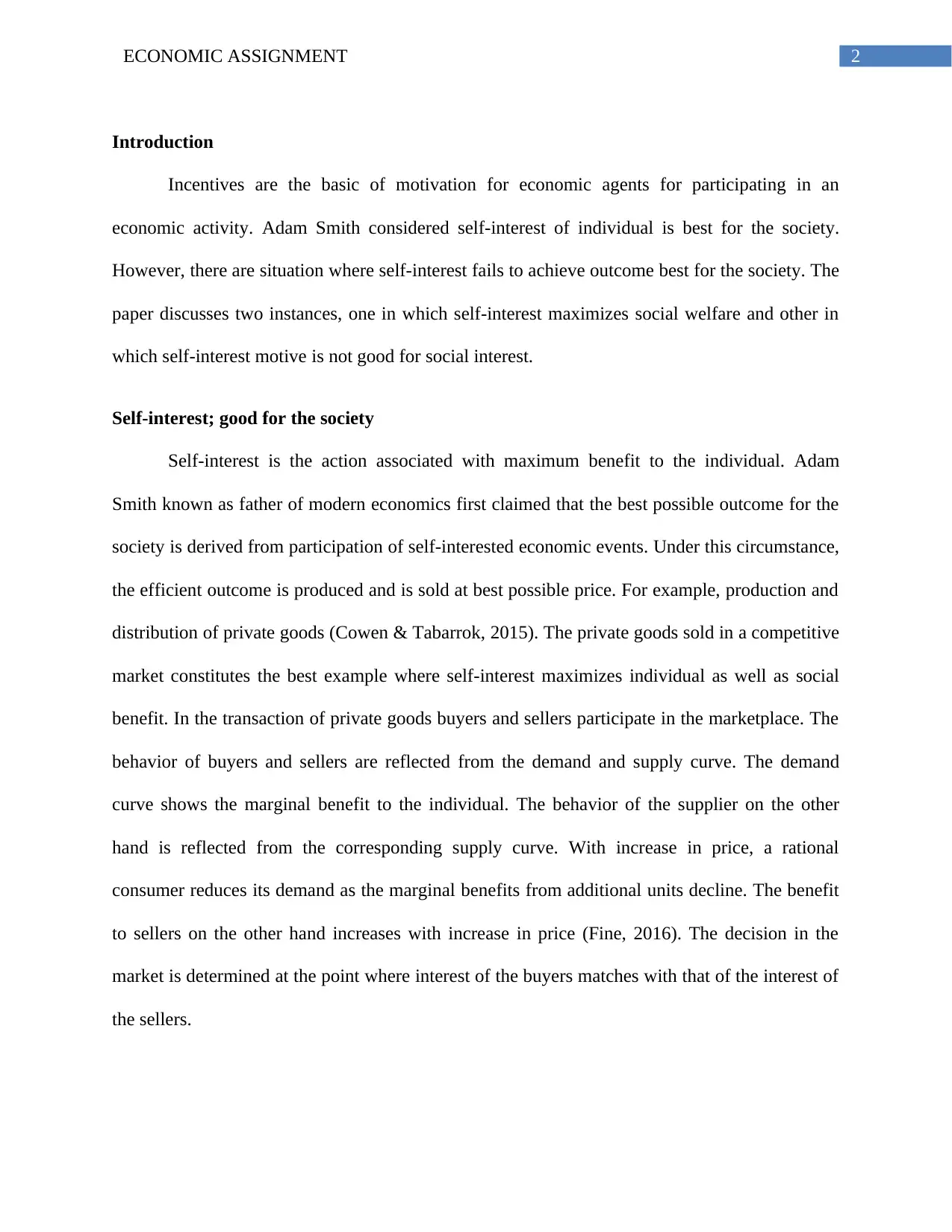
2ECONOMIC ASSIGNMENT
Introduction
Incentives are the basic of motivation for economic agents for participating in an
economic activity. Adam Smith considered self-interest of individual is best for the society.
However, there are situation where self-interest fails to achieve outcome best for the society. The
paper discusses two instances, one in which self-interest maximizes social welfare and other in
which self-interest motive is not good for social interest.
Self-interest; good for the society
Self-interest is the action associated with maximum benefit to the individual. Adam
Smith known as father of modern economics first claimed that the best possible outcome for the
society is derived from participation of self-interested economic events. Under this circumstance,
the efficient outcome is produced and is sold at best possible price. For example, production and
distribution of private goods (Cowen & Tabarrok, 2015). The private goods sold in a competitive
market constitutes the best example where self-interest maximizes individual as well as social
benefit. In the transaction of private goods buyers and sellers participate in the marketplace. The
behavior of buyers and sellers are reflected from the demand and supply curve. The demand
curve shows the marginal benefit to the individual. The behavior of the supplier on the other
hand is reflected from the corresponding supply curve. With increase in price, a rational
consumer reduces its demand as the marginal benefits from additional units decline. The benefit
to sellers on the other hand increases with increase in price (Fine, 2016). The decision in the
market is determined at the point where interest of the buyers matches with that of the interest of
the sellers.
Introduction
Incentives are the basic of motivation for economic agents for participating in an
economic activity. Adam Smith considered self-interest of individual is best for the society.
However, there are situation where self-interest fails to achieve outcome best for the society. The
paper discusses two instances, one in which self-interest maximizes social welfare and other in
which self-interest motive is not good for social interest.
Self-interest; good for the society
Self-interest is the action associated with maximum benefit to the individual. Adam
Smith known as father of modern economics first claimed that the best possible outcome for the
society is derived from participation of self-interested economic events. Under this circumstance,
the efficient outcome is produced and is sold at best possible price. For example, production and
distribution of private goods (Cowen & Tabarrok, 2015). The private goods sold in a competitive
market constitutes the best example where self-interest maximizes individual as well as social
benefit. In the transaction of private goods buyers and sellers participate in the marketplace. The
behavior of buyers and sellers are reflected from the demand and supply curve. The demand
curve shows the marginal benefit to the individual. The behavior of the supplier on the other
hand is reflected from the corresponding supply curve. With increase in price, a rational
consumer reduces its demand as the marginal benefits from additional units decline. The benefit
to sellers on the other hand increases with increase in price (Fine, 2016). The decision in the
market is determined at the point where interest of the buyers matches with that of the interest of
the sellers.
⊘ This is a preview!⊘
Do you want full access?
Subscribe today to unlock all pages.

Trusted by 1+ million students worldwide
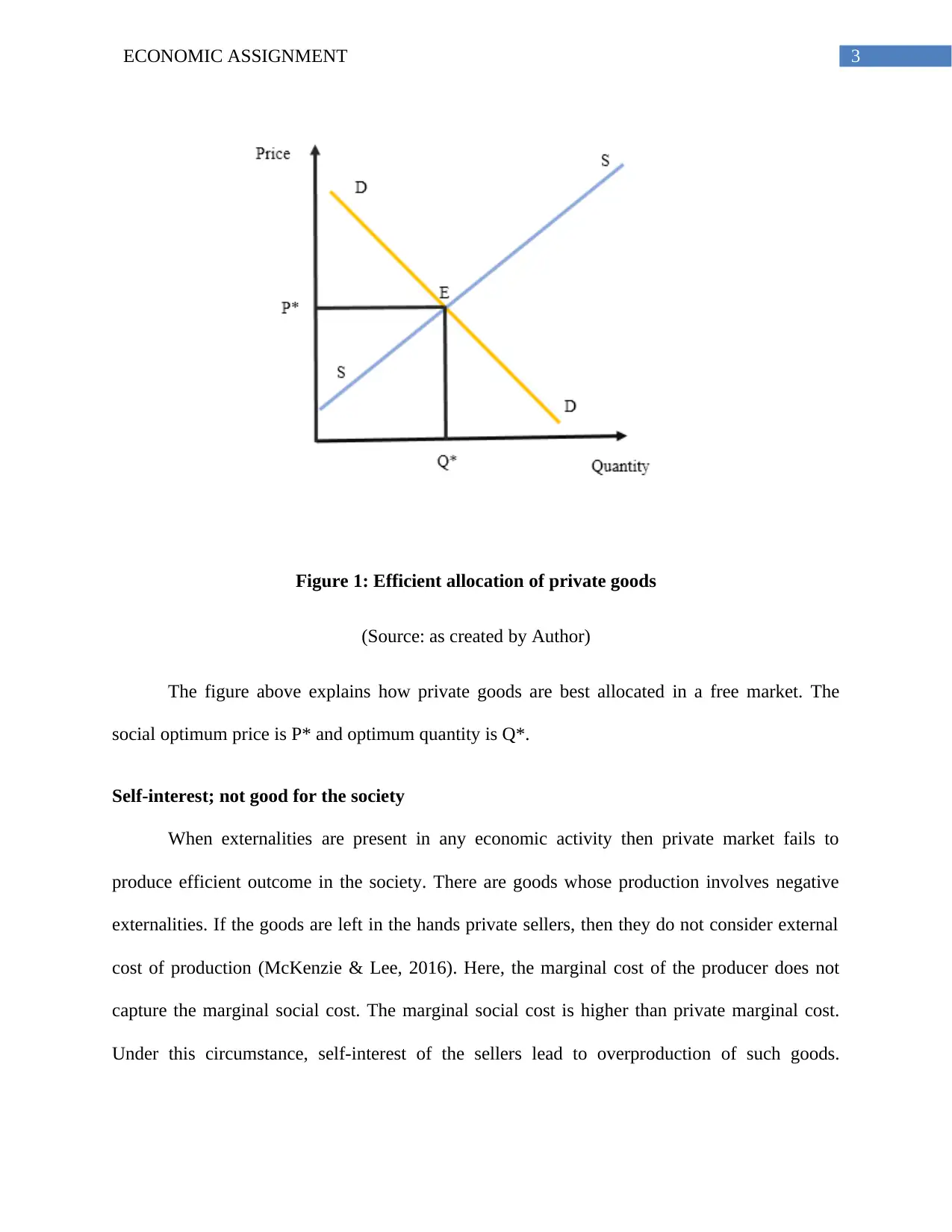
3ECONOMIC ASSIGNMENT
Figure 1: Efficient allocation of private goods
(Source: as created by Author)
The figure above explains how private goods are best allocated in a free market. The
social optimum price is P* and optimum quantity is Q*.
Self-interest; not good for the society
When externalities are present in any economic activity then private market fails to
produce efficient outcome in the society. There are goods whose production involves negative
externalities. If the goods are left in the hands private sellers, then they do not consider external
cost of production (McKenzie & Lee, 2016). Here, the marginal cost of the producer does not
capture the marginal social cost. The marginal social cost is higher than private marginal cost.
Under this circumstance, self-interest of the sellers lead to overproduction of such goods.
Figure 1: Efficient allocation of private goods
(Source: as created by Author)
The figure above explains how private goods are best allocated in a free market. The
social optimum price is P* and optimum quantity is Q*.
Self-interest; not good for the society
When externalities are present in any economic activity then private market fails to
produce efficient outcome in the society. There are goods whose production involves negative
externalities. If the goods are left in the hands private sellers, then they do not consider external
cost of production (McKenzie & Lee, 2016). Here, the marginal cost of the producer does not
capture the marginal social cost. The marginal social cost is higher than private marginal cost.
Under this circumstance, self-interest of the sellers lead to overproduction of such goods.
Paraphrase This Document
Need a fresh take? Get an instant paraphrase of this document with our AI Paraphraser
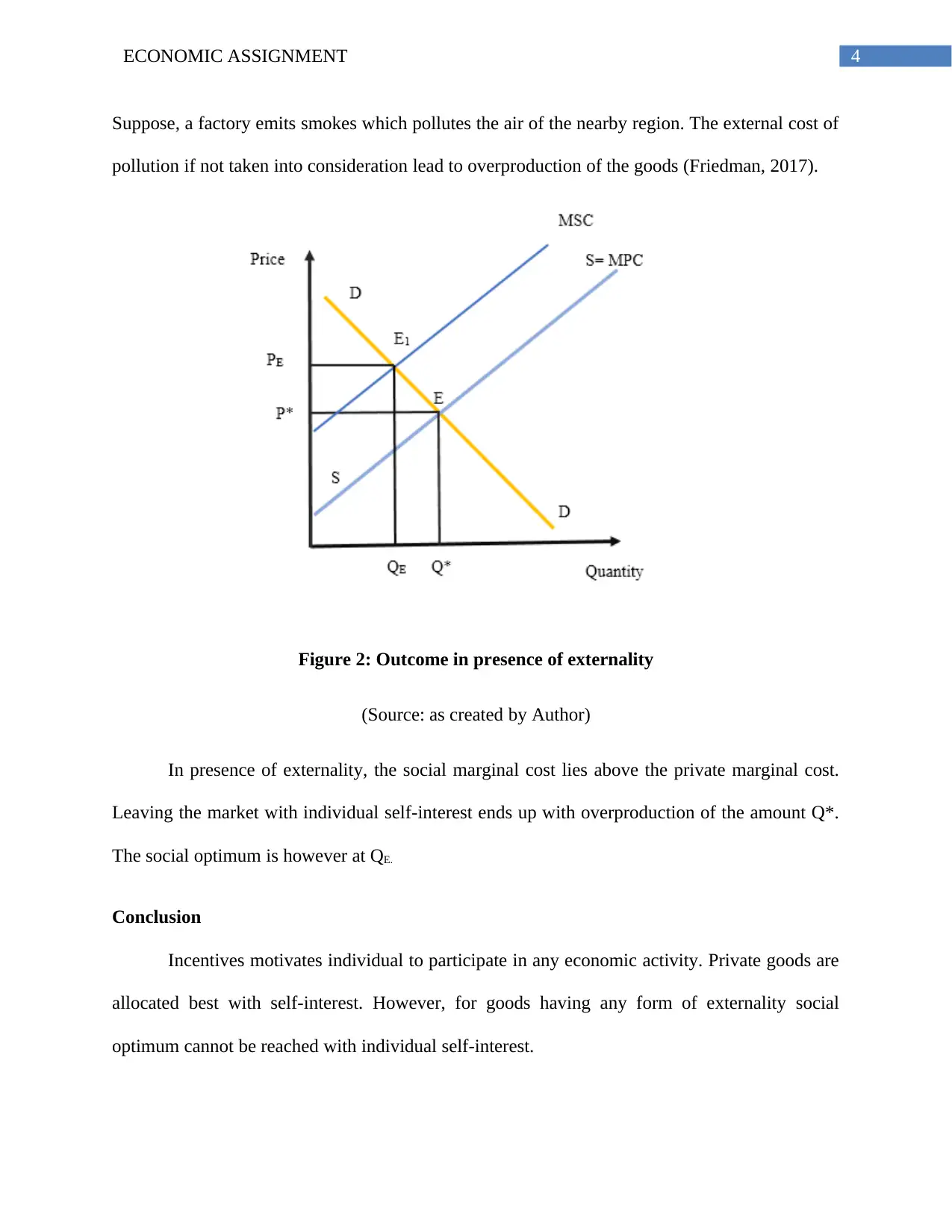
4ECONOMIC ASSIGNMENT
Suppose, a factory emits smokes which pollutes the air of the nearby region. The external cost of
pollution if not taken into consideration lead to overproduction of the goods (Friedman, 2017).
Figure 2: Outcome in presence of externality
(Source: as created by Author)
In presence of externality, the social marginal cost lies above the private marginal cost.
Leaving the market with individual self-interest ends up with overproduction of the amount Q*.
The social optimum is however at QE.
Conclusion
Incentives motivates individual to participate in any economic activity. Private goods are
allocated best with self-interest. However, for goods having any form of externality social
optimum cannot be reached with individual self-interest.
Suppose, a factory emits smokes which pollutes the air of the nearby region. The external cost of
pollution if not taken into consideration lead to overproduction of the goods (Friedman, 2017).
Figure 2: Outcome in presence of externality
(Source: as created by Author)
In presence of externality, the social marginal cost lies above the private marginal cost.
Leaving the market with individual self-interest ends up with overproduction of the amount Q*.
The social optimum is however at QE.
Conclusion
Incentives motivates individual to participate in any economic activity. Private goods are
allocated best with self-interest. However, for goods having any form of externality social
optimum cannot be reached with individual self-interest.
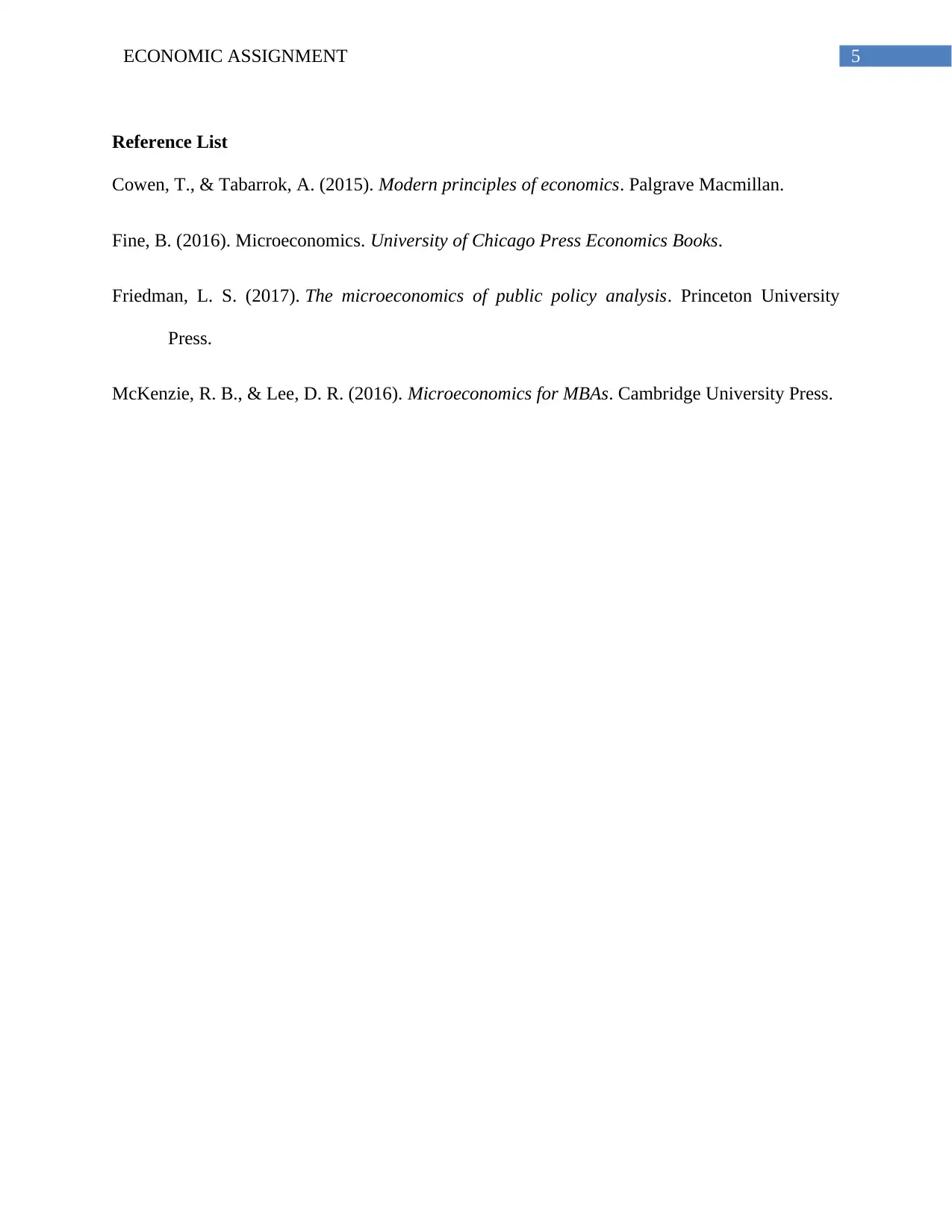
5ECONOMIC ASSIGNMENT
Reference List
Cowen, T., & Tabarrok, A. (2015). Modern principles of economics. Palgrave Macmillan.
Fine, B. (2016). Microeconomics. University of Chicago Press Economics Books.
Friedman, L. S. (2017). The microeconomics of public policy analysis. Princeton University
Press.
McKenzie, R. B., & Lee, D. R. (2016). Microeconomics for MBAs. Cambridge University Press.
Reference List
Cowen, T., & Tabarrok, A. (2015). Modern principles of economics. Palgrave Macmillan.
Fine, B. (2016). Microeconomics. University of Chicago Press Economics Books.
Friedman, L. S. (2017). The microeconomics of public policy analysis. Princeton University
Press.
McKenzie, R. B., & Lee, D. R. (2016). Microeconomics for MBAs. Cambridge University Press.
⊘ This is a preview!⊘
Do you want full access?
Subscribe today to unlock all pages.

Trusted by 1+ million students worldwide
1 out of 6
Related Documents
Your All-in-One AI-Powered Toolkit for Academic Success.
+13062052269
info@desklib.com
Available 24*7 on WhatsApp / Email
![[object Object]](/_next/static/media/star-bottom.7253800d.svg)
Unlock your academic potential
Copyright © 2020–2025 A2Z Services. All Rights Reserved. Developed and managed by ZUCOL.




